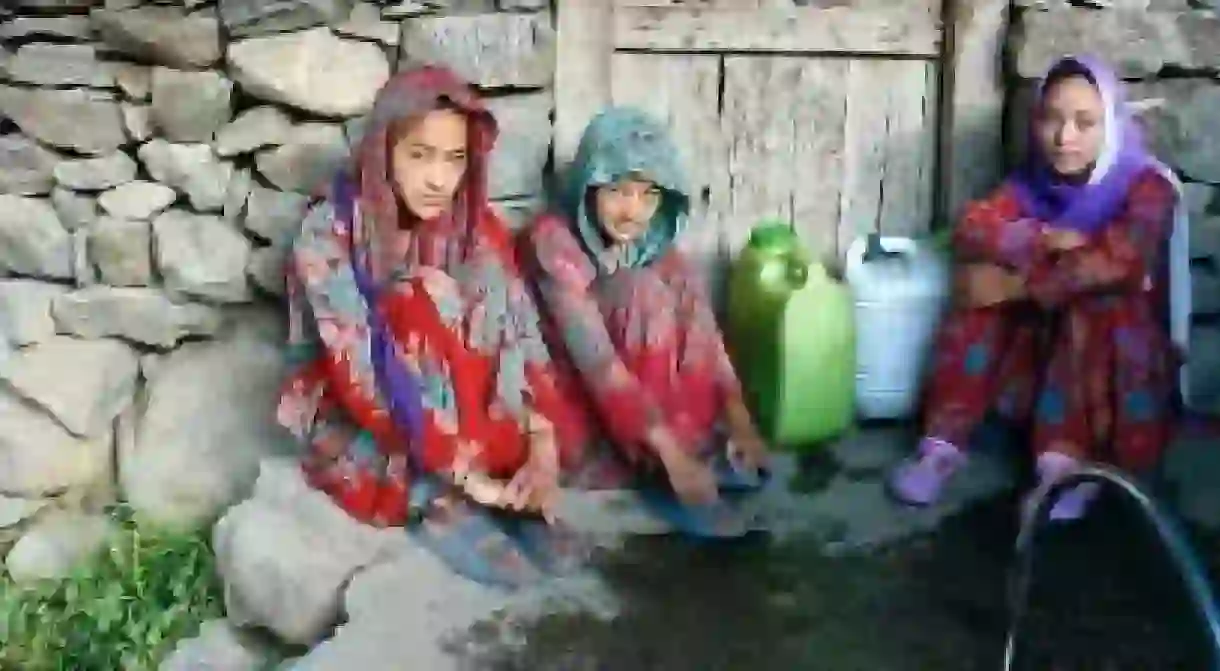The Last Frontier of Turtuk, Ladakh

Turtuk is the last Indian outpost before Pakistan in Ladakh and the Northernmost villages in India. Lying on the banks of Shyok River, it is a very secluded, military-dominated, and sensitive area, as merely ten kilometers ahead is the border or line of control between India and Pakistan. Known as erstwhile Baltistan, the place was under Pakistani control till 1971, so it is predominantly Muslim, and the people here speak Urdu, Ladakhi, Balti, and Hindi. It is the gateway to the Siachen Glacier, with the snow-clad peaks of Mt. K2, visible in the horizon from the top of the village.

Turtuk has only been opened to tourists since 2010 and is therefore a hidden gem. To write about it is almost like exposing a secret, for to go there is like a journey of discovery that one has been privileged to gain access to, a mystical world that one might otherwise never know existed; yet the place leaves an indelible impact that needs to be shared.

It is quite a trek to get to Turtuk, as it is far from the town of Leh. You might be able to hop onto a shared taxi or rent a car, by far the best option, but it is completely worth the arduous journey. It takes about eight to nine hours to get to Turtuk, and it is advisable to stop at Hunder, Nubra Valley overnight if one wants to see both places. Foreign nationals have to obtain permits to enter Turtuk, and these can be obtained through a travel agent beforehand in Leh. Indians can enter showing a government-approved id.
The landscape, culture, language, clothing, and even the physical features of people change quite drastically crossing over into Turtuk, technically entering Baltistan.

On entering this quaint little place through a rickety wooden bridge with heavy military security, a sense of tension and gravity envelops the atmosphere; photography around the bridge is strictly prohibited due to the sensitive nature of the location. Grey, ash-like sand, heat, and dust build up like a cloud on the riverbanks, with miles of nothingness except your jeep and maybe a few locals working on the roads here and there. Time seems to stand still along with the stillness of the hot air, due to the road maintenance, which tends happens quite often on journeys such as these.

Turtuk is made up of a couple of villages, one of the main ones being Pharol, which sits atop a hill. There are several little camps and guesthouses that have cropped up in this small hamlet, which can be discovered while walking around its many narrow paths, but hard to find on the web. It might be a good idea to book through a travel agent or ask the locals for directions after reaching Leh. Turtuk Holiday Camp has nice tented accommodations, although they are perhaps a tad more expensive than the smaller guesthouses in the main village. Aesthetically done up with modern bathrooms and a little sit out in front, they cost no more than Rs. 2000 per person per night in peak season. The food is fairly simple but tasty. Everything is vegetarian since it is difficult to maintain poultry due to the remote location. The camp is located on the base before you enter the main village and hence is a bit remote. The popular place to stay in Turtuk, and perhaps the nicest, however, is the recently opened Maha guest house. It has all modern features and amenities including a little garden café, which serves snacks and tea to outsiders as well, not to mention that it lies hidden amidst the fields and narrow lanes of the village of Pharol, adding to its charm.
There isn’t really much to do in Turtuk, except trek to the village and the monastery at the top. On the way across the hanging bridge, there is a beautiful brook adjacent to the war memorial for those who fought the Indo – Pak war in Kargil.

Pharol itself is a very calm place with agricultural fields of barley and apricot trees growing everywhere. A few houses and guesthouses dot the meandering lanes. Shy, yet friendly girls and children hop around the village, curious to know and meet the rare breed of tourists they come across. Their garb is very different from the rest of the locals in Ladakh, with bright, colorful, contrasting floral prints that stand out amidst all the greenery and stone houses.

At the edge of the hill, there is a cliff from which the entire horizon is visible, with spectacular views of the riverbanks, the underlying plains, and the peaks of Pakistan. Walking down to the plains across the military outpost, just a few kilometers before the Pakistan border, it is remarkable to sit and watch the sunset atop one of the many boulders as dusk sets in, absorbing the quiet yet somber beauty of Turtuk.

To travel to a place is not just to get there; it’s all about the journey, especially on a road trip through Ladakh. It’s the feeling a place evokes, being there in the moment; if it is unable to stir emotions that form a lasting impression, it was quite meaningless to have gone there. To look at the landscape from a distance with squinted eyes, this village could just as well mimic the Italian countryside, with tall Viridian green trees contrasted against pale ochre patches of barley. There is a desire to linger on, the sense of being a part of a time warp into the past that would change if exited. Could such a place exist in the realms of reality? Or was this an accidental door opened to Alice’s secret wonderland, such that being a privy to it as outsiders was much like seeing through the looking glass?














